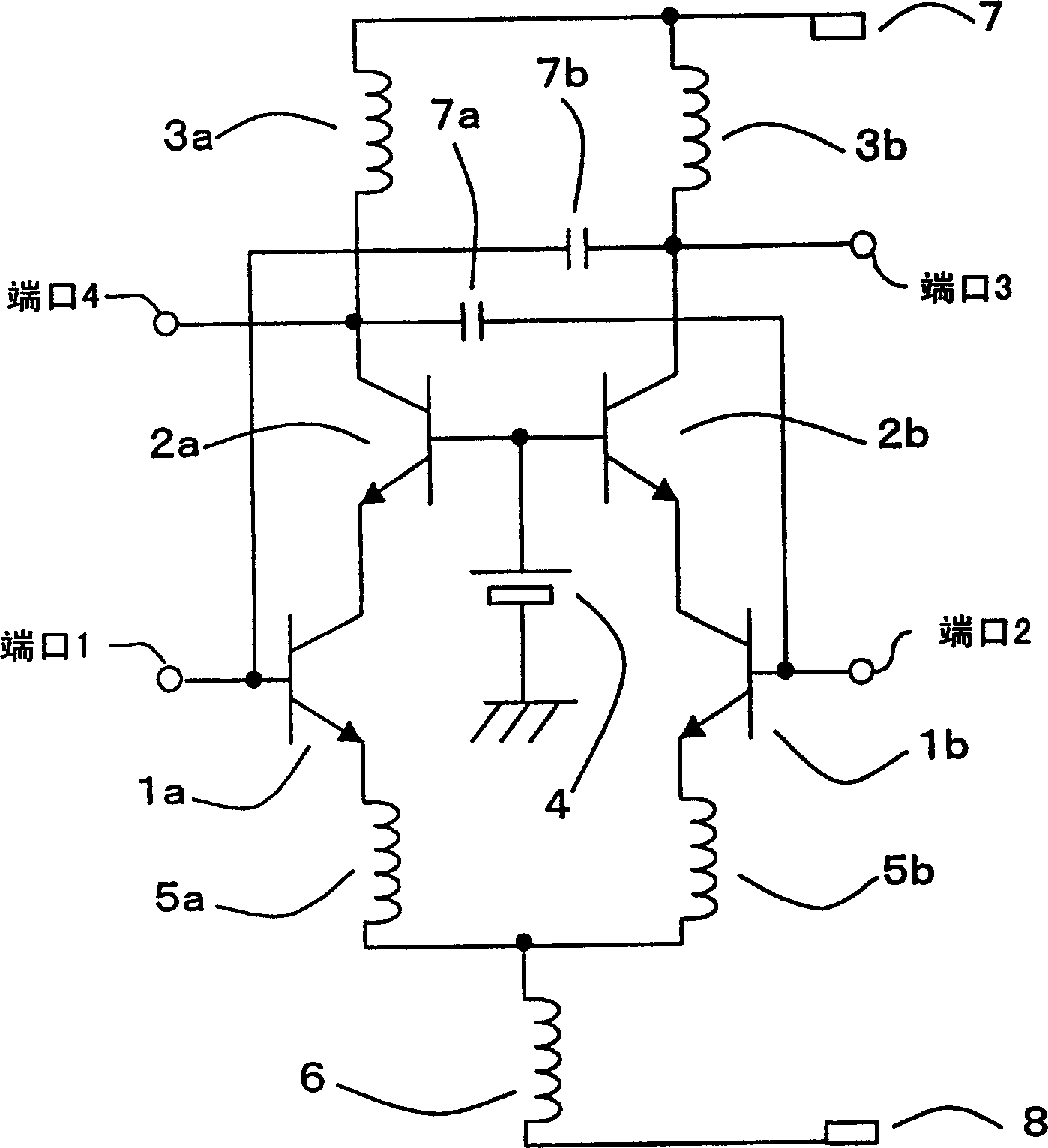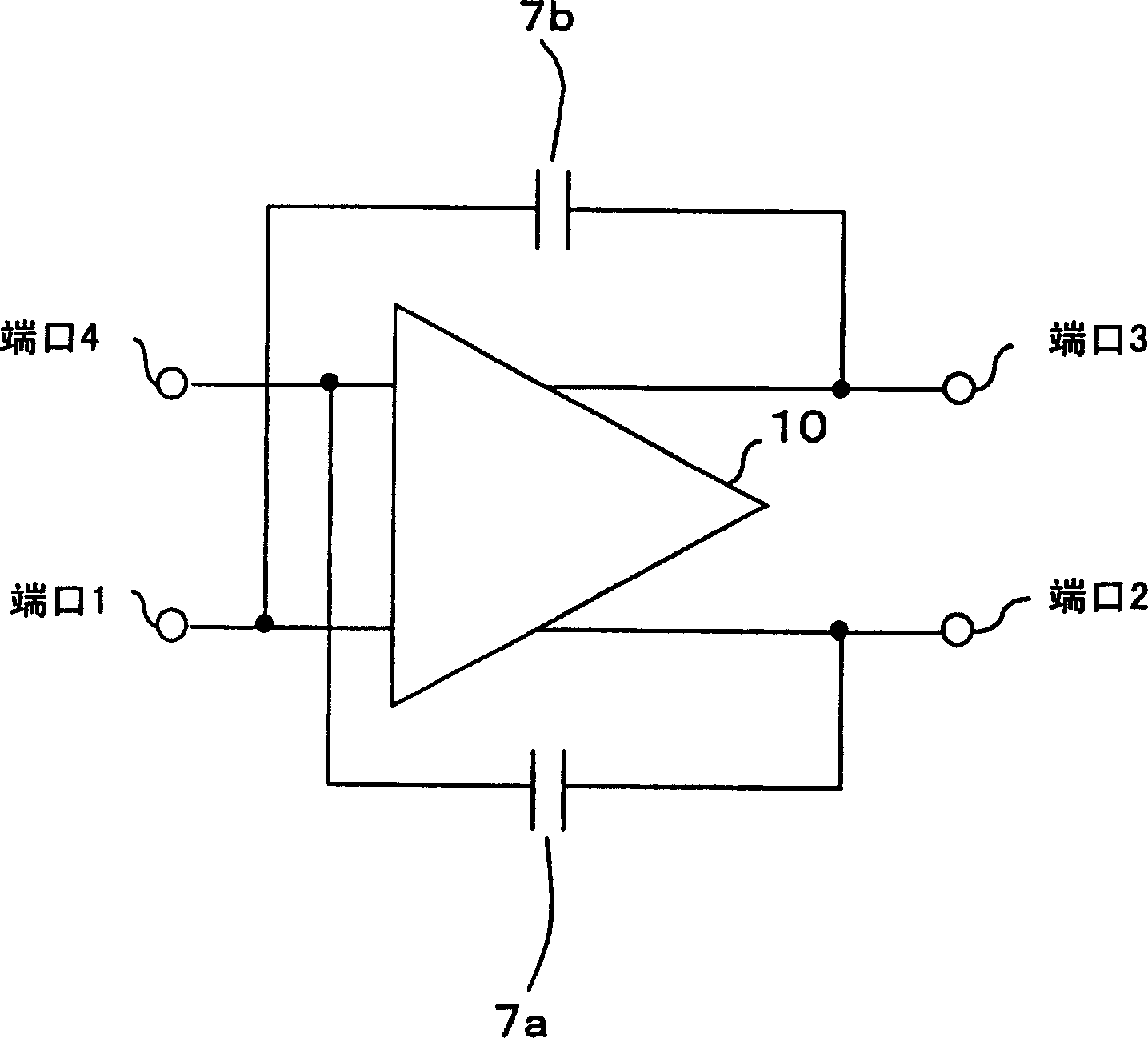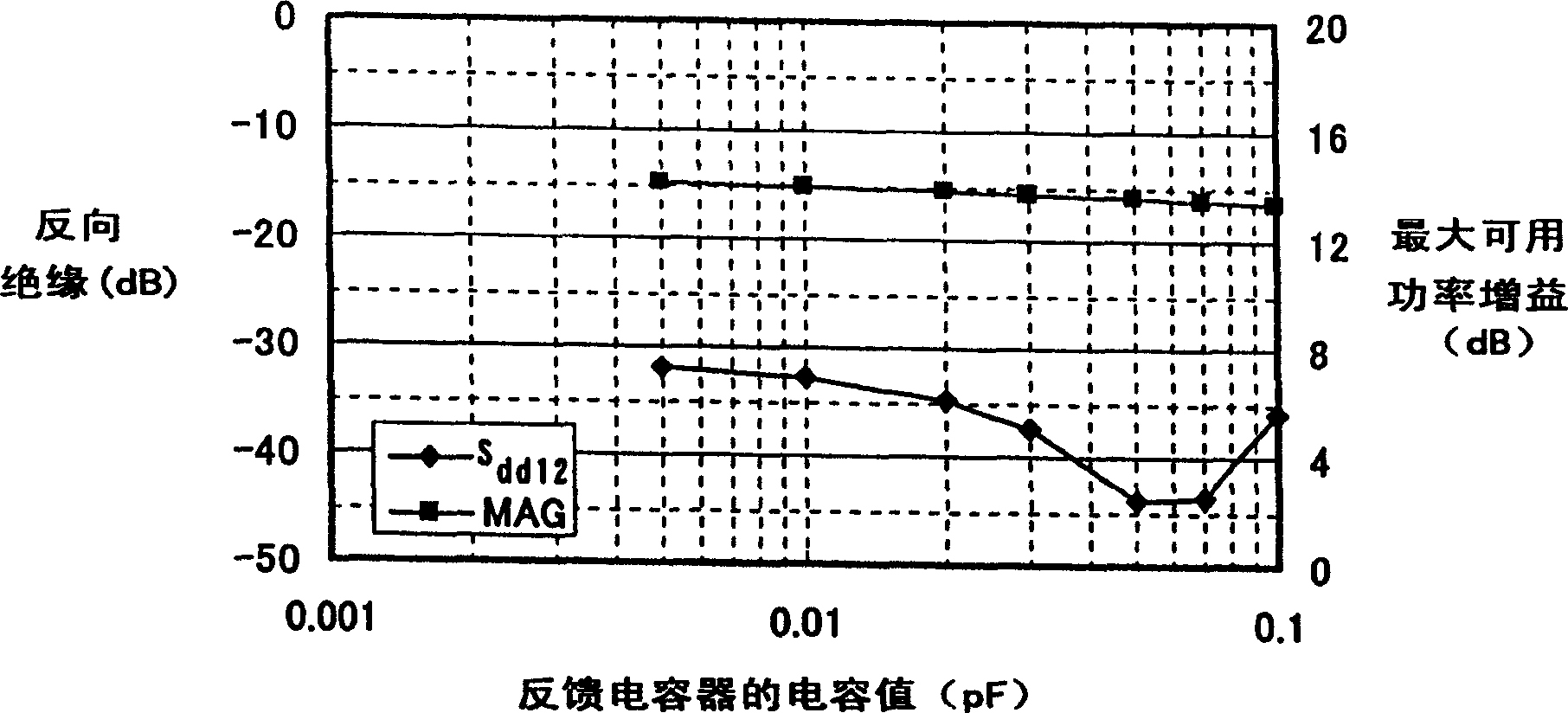High frequency differential circuit, differential amplifier, differential mixer, differential oscillator, and radio circuit using same
A differential amplifier circuit, differential circuit technology, applied in the field of high-frequency circuits, amplifiers, mixers and radio circuits using them, capable of solving the problem of reduced reverse insulation characteristics, unsatisfactory conventional differential amplifiers, local oscillators Deterioration of noise characteristics, etc.
- Summary
- Abstract
- Description
- Claims
- Application Information
AI Technical Summary
Problems solved by technology
Method used
Image
Examples
no. 1 example
[0086] figure 1 is a circuit diagram of a cascode type differential amplifier according to a first embodiment of the present invention. exist figure 1 , the differential amplifier includes transistors 1a and 1b, transistors 2a and 2b, inductors 3a and 3b, bias source 4, inductors 5a and 5b, inductor 6, positive source 7, feedback capacitors 7a and 7b, and ground 8.
[0087] Transistors 1a and 1b form a differential pair for amplification. Mutually inverse signals are input to port 1 connected to the base of the transistor 1a and port 2 connected to the base of the transistor 1b.
[0088] The emitter of transistor 2a is connected to the collector of transistor 1a, thereby forming a cascode amplifier. Similarly, the emitter of transistor 2b is connected to the collector of transistor 1b, thereby forming a cascode amplifier.
[0089] Inductors 5a and 5b are connected in series between the emitters of transistors 1a and 1b. One end of the inductor 6 is connected between the...
no. 2 example
[0110] Figure 6 is a circuit diagram of a cascode differential amplifier according to a second embodiment of the present invention. exist Figure 6 In , elements similar to those of the differential amplifier according to the first embodiment are denoted by the same symbols, and their detailed descriptions are omitted. From Figure 6 It can be clearly seen that the differential amplifier according to the second embodiment includes passive element circuits 407a and 407b each composed of passive elements such as capacitors, resistors, inductors, etc., and does not include the differential amplifier according to the first embodiment. The feedback capacitor included in the amplifier.
[0111] Figure 7 is a specific example diagram showing the circuit configuration of the passive element circuits 407a and 407b. The circuit structures of the passive element circuits 407a and 407b are the same, so the following description is only for the circuit structure of the passive eleme...
no. 3 example
[0122] In RF amplifiers or local amplifiers, it is necessary to enhance reverse insulation characteristics within a limited predetermined frequency band. Therefore, it is necessary to provide a circuit to control the band-pass amplitude and phase characteristics of the passive element circuit within a limited frequency band, and also to prevent abnormal oscillation due to positive feedback in frequency bands other than the limited frequency band.
[0123] Figure 10 is a circuit diagram of a cascode differential amplifier according to a third embodiment of the present invention. exist Figure 10 In , elements similar to those of the differential amplifier according to the first embodiment are denoted by the same symbols, and thus their descriptions are omitted. From Figure 10 As can be seen, in the third embodiment, passive element circuits 807a and 807b composed of capacitors and resistors and a parallel resonance circuit composed of capacitors and inductors are used inst...
PUM
 Login to View More
Login to View More Abstract
Description
Claims
Application Information
 Login to View More
Login to View More - Generate Ideas
- Intellectual Property
- Life Sciences
- Materials
- Tech Scout
- Unparalleled Data Quality
- Higher Quality Content
- 60% Fewer Hallucinations
Browse by: Latest US Patents, China's latest patents, Technical Efficacy Thesaurus, Application Domain, Technology Topic, Popular Technical Reports.
© 2025 PatSnap. All rights reserved.Legal|Privacy policy|Modern Slavery Act Transparency Statement|Sitemap|About US| Contact US: help@patsnap.com



